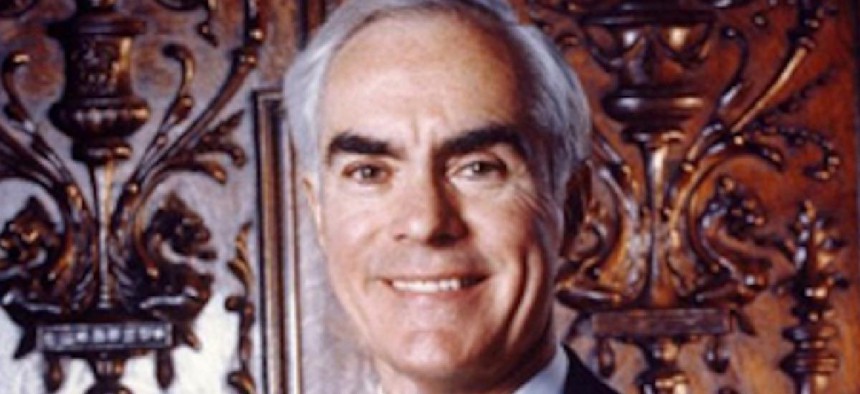The continuing ramifications for PA's landmark SCOTUS abortion ruling

The late Robert P. Casey Sr., who served as governor of Pennsylvania from 1988 to 1995 – image from Pennsylvania Historical & Museum Commission
Roe v. Wade is, perhaps, the seminal court case of the past half-century. Certainly, no U.S. Supreme Court case has been cited more often in the acrimonious debate over Brett Kavanaugh’s nomination to the Supreme Court. But a second critical court decision, less remembered today – but no less important – was Planned Parenthood of Southeastern Pennsylvania v. Casey. Its history and background are as relevant today as they were back in 1992 when the case was resolved by the Supreme Court.
Roe made abortion a right; Casey defined the limits states could impose on that right.
In 1989 the Pennsylvania legislature had passed changes to its 1982 Abortion Control Act, requiring, among other provisions, “informed consent” procedures as well as a 24-hour waiting period before an abortion could be obtained. In addition, a minor seeking an abortion would now require the approval of one parent or a court, and a married woman would have to notify her husband that she intended to get the procedure.
Challenged quickly, a federal district court struck down the entire Pennsylvania law only to be largely overturned by the 3rd Circuit Court of Appeals.
Ultimately, the case moved to the Supreme Court as Planned Parenthood of Southeastern Pennsylvania vs. Casey (505 U.S. 833 (1992). In a 5-to-4 opinion, the Supreme Court upheld the Roe v. Wade decision but it also allowed states to continue to regulate abortions subject to clear limitations. Among them: the state could legally ban abortion if the fetus was viable and no “undue burden” was imposed on women.
No issue roiled Pennsylvania politics more at the time. It also slowly seeped into national electoral politics amid raging debates about abortion. At the center of it was the state’s governor, Bob Casey, a leading proponent of restricting abortion and an opponent of the Roe decision. In fact, the governor had vetoed an earlier abortion control bill sent to him by the legislature because it failed to put enough constraints on Roe. Casey subsequently helped put together the bipartisan coalition that led to passage of a bill he could support.
Casey had emerged as of one the nation’s leading politicians opposing abortion. He was a politician some voters could disagree with throughout his career while continuing to support him. Most considered him a principled politician, even while railing at some of his policies.
Indeed, no politician ever showed more determination and forthrightness. He started his career as a state senator from Scranton, eventually seeking the governorship three times before winning on his fourth effort in 1986. In between, he was elected twice as Auditor General of the state. Along the way he suffered three losses for governor in his own party primary earning him the sobriquet, “the three-time loss from Holy Cross,” a reference to his undergraduate college.
In today’s terms, Casey was “a cultural conservative and a social liberal.” He was no conservative on using the government to expand the economy and to help the disadvantaged. His Children’s Health Insurance Program (CHIP) was a model for the rest of the nation. It provided insurance to children whose family income was too high to qualify for medical assistance.
But despite Casey’s liberal inclinations, he opposed abortion rights with a vengeance. It cost him politically and created a huge stir within the state and the nation. It also put him at odds with many politicians in his own party.
After he made abortion a major focus of his governorship, he soon found himself shunned by the national Democratic Party. Notably, he sought to address the issue at the 1992 Democratic convention in New York City but was denied an opportunity to speak. Later, Casey himself would write that buttons were distributed at the convention picturing him as the pope.
Casey became a pariah in the national party, while many Pennsylvania conventional delegates at the convention were dumbfounded – if not openly unhappy – by the governor’s public stance.
Casey, nonetheless, continued to serve the remainder of his second term, serving as a champion of liberal policy as well as a foe of abortion rights. Probably no politician today either in Pennsylvania or the nation could emulate his political high-wire act supporting his seemingly discordant political views while remaining a popular, indeed legendary, figure in state politics.
Casey died in 2000 but the legacy of Planned Parenthood vs. Casey continues along with Roe v Wade as a defining law of the land on abortion. And like Roe v. Wade, it now hovers portentously over national politics decades after the original decision.
G. Terry Madonna is Professor of Public Affairs at Franklin & Marshall College, and Michael Young is a speaker, pollster, author, and was Professor of Politics and Public Affairs at Penn State University. Madonna and Young encourage responses to the column and can be reached, respectively, at terry.madonna@fandm.edu and drmikelyoung@comcast.net.
NEXT STORY: Decoding Pennsylvania's gun control paradox
